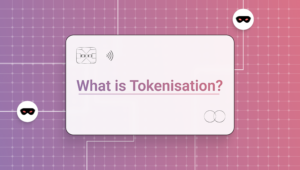Payments-as-a-Service(PaaS) — Evolving the Way You Handle Payments
The payments-as-a-service, aka PaaS market, is rapidly increasing due to the expansion of cloud-based services to the payment value chain. PaaS providers enable financial institutions and consumers to have flexible and agile payment models that offer easy-to-use cloud-based third-party platforms.
In the past few decades, financial institutions have evolved from outsourcing non-core components (data management, hardware, risk management, ATM activities) to outsourcing core components. Among them are transaction management, payment processing, KYC, cybersecurity, and so forth. The idea of outsourcing these core components of the payment value chain is known as Payment as a Service (PaaS).
Table of Contents
So, what is Payments-as-a-service?
Everyone knows the term SaaS; if not, Software-as-service (SaaS) refers to software that a third-party company offers and is accessible over the Internet rather than installed in your operating system. Similarly, a PaaS model involves outsourcing one or more components of the payment value chain to a platform provider. The service combines SaaS (Software-as-a-Service) and IaaS (Infrastructure-as-a-Service) and offers payments and technology services.
A PaaS enables businesses to offer a broader range of services to customers. However, businesses and consumers have long been concerned about fraud and security. PaaS providers address these issues by simplifying payment infrastructure and providing cost-effective solutions.
PaaS offerings are typically scalable and have high availability. Service providers can collaborate with banks, fintech, e-commerce companies, etcetera. Depending on their business requirements, all of these can integrate their solutions with PaaS platforms via Open APIs.
What business can benefit the most from PaaS?
PaaS is highly beneficial for financial businesses because they work around collecting and paying money. However, PaaS is suitable for all business types.
Businesses have to shift towards innovation as they can’t always stick to traditional solutions that are complex and have high maintenance costs. Therefore, adopting PaaS by outsourcing payment systems is the most efficient way for businesses to succeed in the current market and keep up with future trends. Adopting PaaS will help businesses manage a higher volume of transactions faster and at a low price.
PaaS gives businesses the freedom and flexibility to expand their business by accepting payments worldwide.
Typical challenges for banks and businesses in the payment industry
The high cost of ownership: Preserving margins and keeping costs low is crucial for businesses; however, if businesses continue to use traditional models, the operating profit margin will remain low. This is because traditional models require high initial investments, such as license cost, compliance, program management, and high maintenance cost.
Security and Fraud Protection: Security is a big concern as payment frauds occur frequently. These security and fraud concerns increase as businesses start transacting high amounts every day. In addition, these risks will grow as more businesses become involved with online payments.
Providing value-added services to customers: As e-commerce grows worldwide, consumers need more payment options. As a result, banks are also under pressure to provide features such as anti-fraud measures, multi-currency options, and credit solutions to consumers and businesses.
Enabling all these services takes an immense amount of time to activate and for consumers to utilise them.
Complying with rules and regulations worldwide: It is becoming increasingly difficult to comply with global data privacy and security regulations. As a result, a strict set of rules must govern payment ecosystems across borders, including those operated by third parties. However, the laws and regulations governing payments vary from country to country.
Keeping up with rules and regulations worldwide becomes a complex process.
Usage of traditional Infrastructure: The legacy infrastructure inherited from their traditional payment systems has made it difficult for banks to add interoperability and be competitive. It is also challenging for newer fintech companies to stay competitive in developing their payment technology stacks.
Here’s how PaaS makes all the payment concerns whoosh away
There are several benefits that PaaS can offer to banks and other businesses in the payment ecosystem. Here are some of them.
Low costs to access leading technology
PaaS providers own the hardware and software, so they must maintain it. By utilising PaaS, banks and businesses can reduce costs because they are no longer responsible for maintaining payment management infrastructure.
Banks benefit from PaaS providers because they reduce the costs of the payment infrastructure by 60 to 70% in response to regulatory changes.
Pricing transparency
Most PaaS models offer flexible pricing. PaaS providers often customise pricing structures based on customer requirements and provide payment solutions tailored to their needs.
Faster market reach
Banks can face delays when developing functionalities themselves. PaaS advantages include ready-to-use product offerings and easy deployment of new features. In addition, they make it easier for businesses to activate and deactivate functionalities. Launching new products become simpler when businesses use PaaS.
Scalable Payment solutions
PaaS uses cloud platforms to provide greater scalability, reliability, and capacity to cope with heavy traffic usage. As a result, there is little to no chance of transactions failing, no matter how many consumers use the payment solution simultaneously.
Managing global compliance to ensure security
It is expensive and essential to managing global compliance. Therefore, PaaS providers offer assurance of securing the data by implementing ISO 27001 compliance, PCI-DSS compliance, and other security standards.
Offering value-added services through third parties
A PaaS enables new payment services by centralising key platforms. As a result, customers have access to various desirable payment methods.
Better STP rates
Some financial institutions find it challenging to manage payment platforms daily. The adoption of PaaS alleviates human error and bottlenecks. In addition, by integrating core systems, PaaS platforms enable continuous data flows and faster processing.
Key Takeaways
With PaaS, payments will continue to accelerate and evolve rapidly. PaaS providers can enable banks and businesses to cost-effectively pursue a more agile business model through cloud-based third-party platforms. As a result, innovative products and payment methods are brought to the market more quickly, and customer needs, satisfied.


